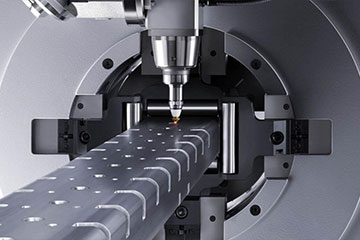The Future of Sheet Metal Manufacturing: AI, Big Data, and Predictive Analytics+ View more
The Future of Sheet Metal Manufacturing: AI, Big Data, and Predictive Analytics
+ View more
Date:2023-11-25 11:00
Introduction:
Sheet metal manufacturing has come a long way with advancements in technology and engineering. In the future, the industry is poised for exponential growth, driven by the integration of artificial intelligence (AI), big data analysis, and predictive analytics. This article explores how these technologies will shape the future of sheet metal manufacturing, revolutionizing production processes, optimizing efficiency, and improving product quality.

1. AI-powered automation:
Artificial intelligence has already made significant strides in various industries, and sheet metal manufacturing is no exception. AI-powered automation systems can analyze vast amounts of data from sensors, cameras, and machines in real-time, enabling autonomous decision-making and process optimization. Intelligent robots can perform complex tasks such as material handling, assembly, and quality control with precision and speed. With the ability to adapt and learn from patterns and algorithms, AI enables continuous improvement and increased productivity in sheet metal manufacturing.
2. Big data analytics for process optimization:
The collection and analysis of massive amounts of data generated throughout the sheet metal manufacturing process hold immense potential for optimization. Manufacturers can leverage big data analytics to identify correlations, patterns, and anomalies that were previously undetectable. By monitoring variables such as temperature, pressure, vibration, and energy consumption, manufacturers can optimize machine settings, reduce waste, and minimize defects. Real-time insights provided by big data analytics enable proactive decision-making and continuous process improvement.
3. Predictive maintenance and quality control:
Predictive analytics, combined with AI and big data, play a crucial role in predicting machine failures and improving product quality. By analyzing historical data on machine performance, maintenance patterns, and quality issues, predictive models can accurately forecast when equipment might require maintenance or replacement. This proactive approach helps prevent unexpected downtime, reduces costs associated with reactive maintenance, and ensures consistent product quality. Predictive analytics also enable early detection of quality deviations, allowing manufacturers to take corrective measures before defects occur.
4. Virtual reality and augmented reality in design and production:
Virtual reality (VR) and augmented reality (AR) technologies are transforming the way sheet metal components are designed, fabricated, and assembled. VR enables engineers to visualize and manipulate 3D models of components, optimizing designs for manufacturability and functionality. AR, on the other hand, aids operators in assembly processes by overlaying digital instructions onto the real-world environment. These immersive technologies improve collaboration, reduce errors, and enhance efficiency throughout the entire manufacturing process.
5. Supply chain optimization through data-driven insights:
In the future, sheet metal manufacturing will be more interconnected than ever before, with a focus on optimizing the entire supply chain. AI and big data analytics can provide valuable insights into supplier performance, inventory management, and demand forecasting. By analyzing historical data and monitoring market trends, manufacturers can make data-driven decisions to streamline procurement, reduce lead times, and ensure the availability of materials and resources when needed. This optimized supply chain reduces costs, enhances flexibility, and improves overall customer satisfaction.
Conclusion:
The future of sheet metal manufacturing lies in embracing emerging technologies such as artificial intelligence, big data analytics, and predictive analytics. These innovations pave the way for increased automation, improved process optimization, proactive maintenance, enhanced quality control, and optimized supply chains. As AI continues to evolve, it will revolutionize the industry, empowering manufacturers with data-driven insights and capabilities previously unimaginable. The integration of virtual reality and augmented reality further enhances design and production processes, ensuring efficiency, accuracy, and collaboration. The future of sheet metal manufacturing is bright, driven by the transformative power of AI, big data, and predictive analytics.
Share to:
Recommend wonderful blog posts

